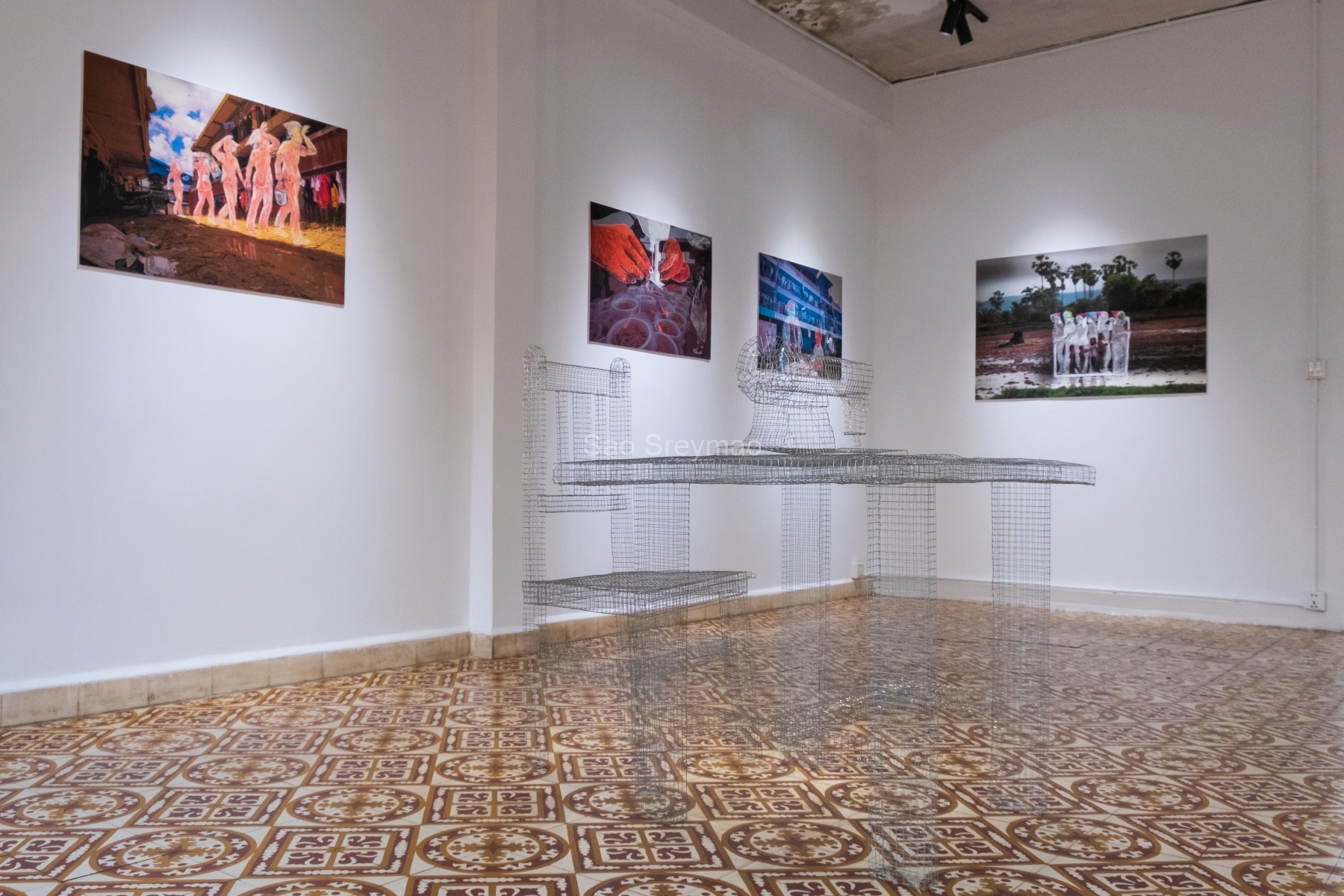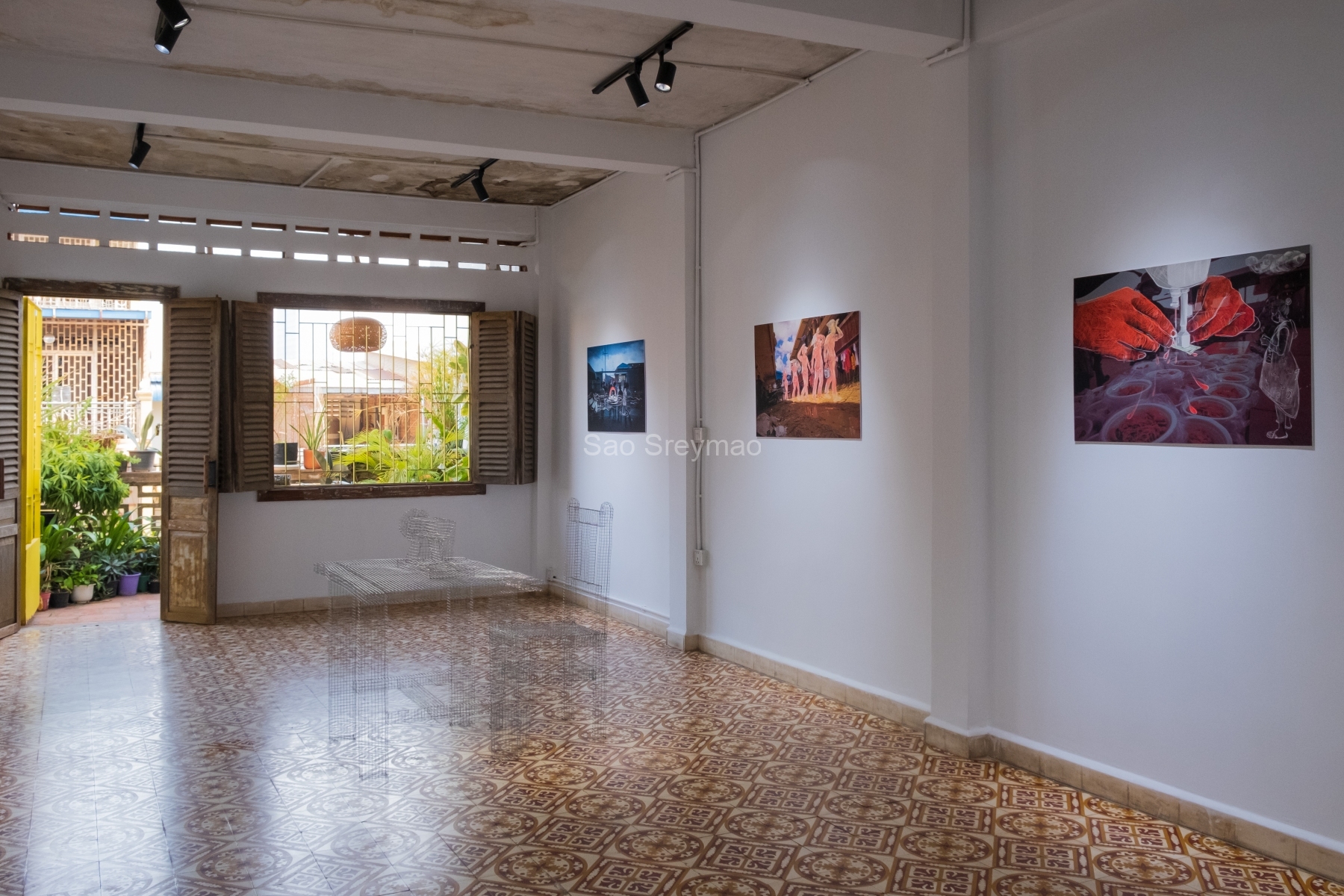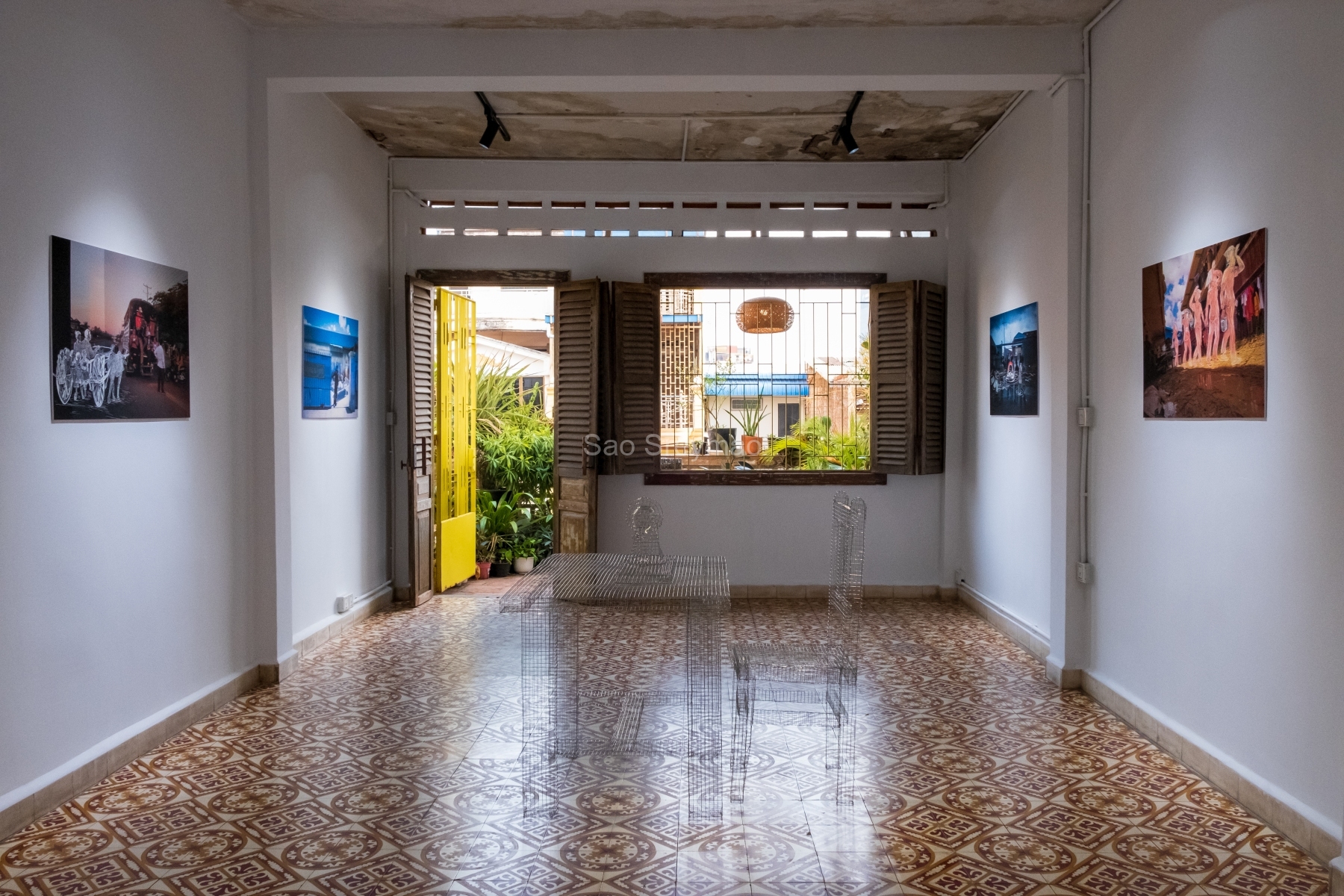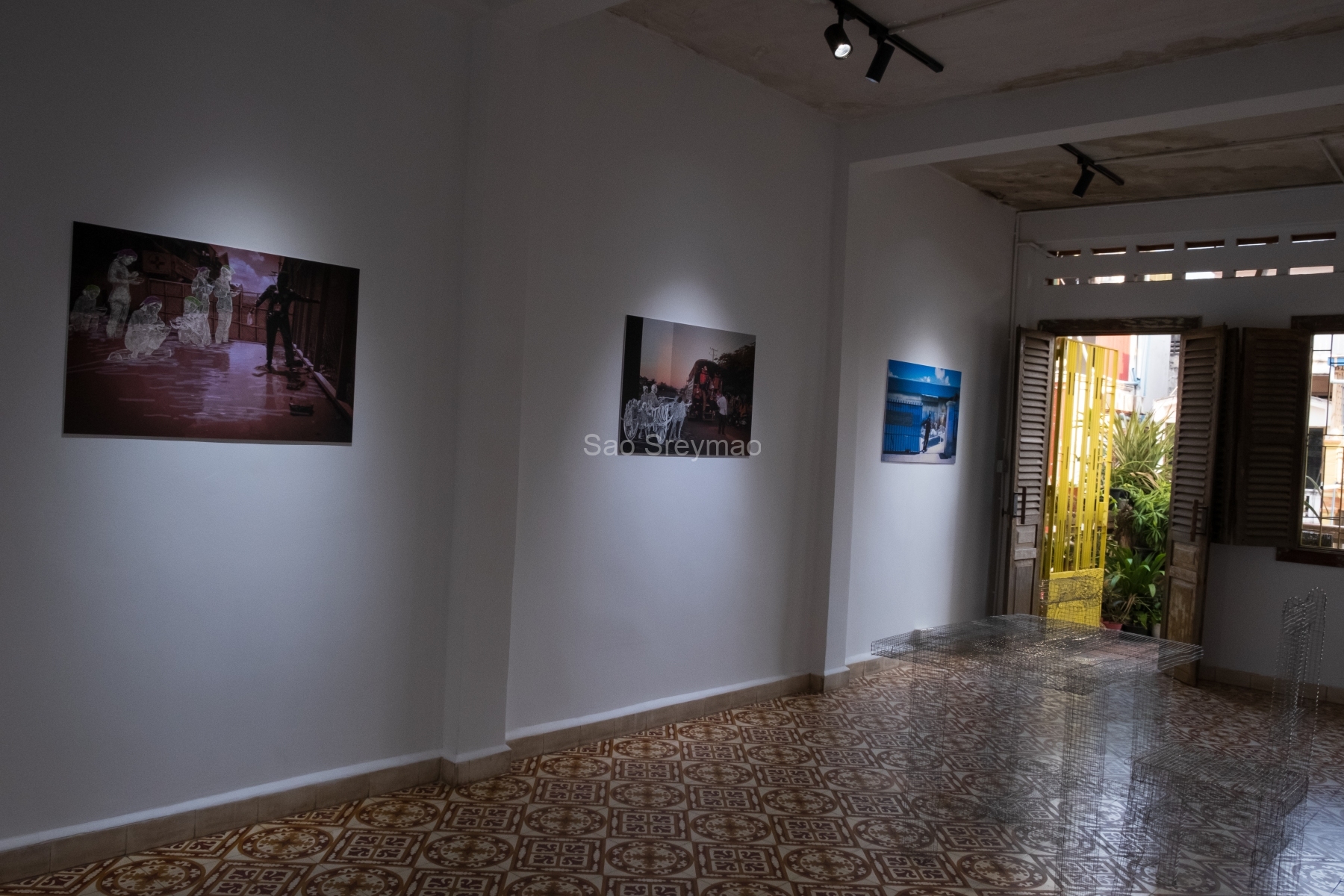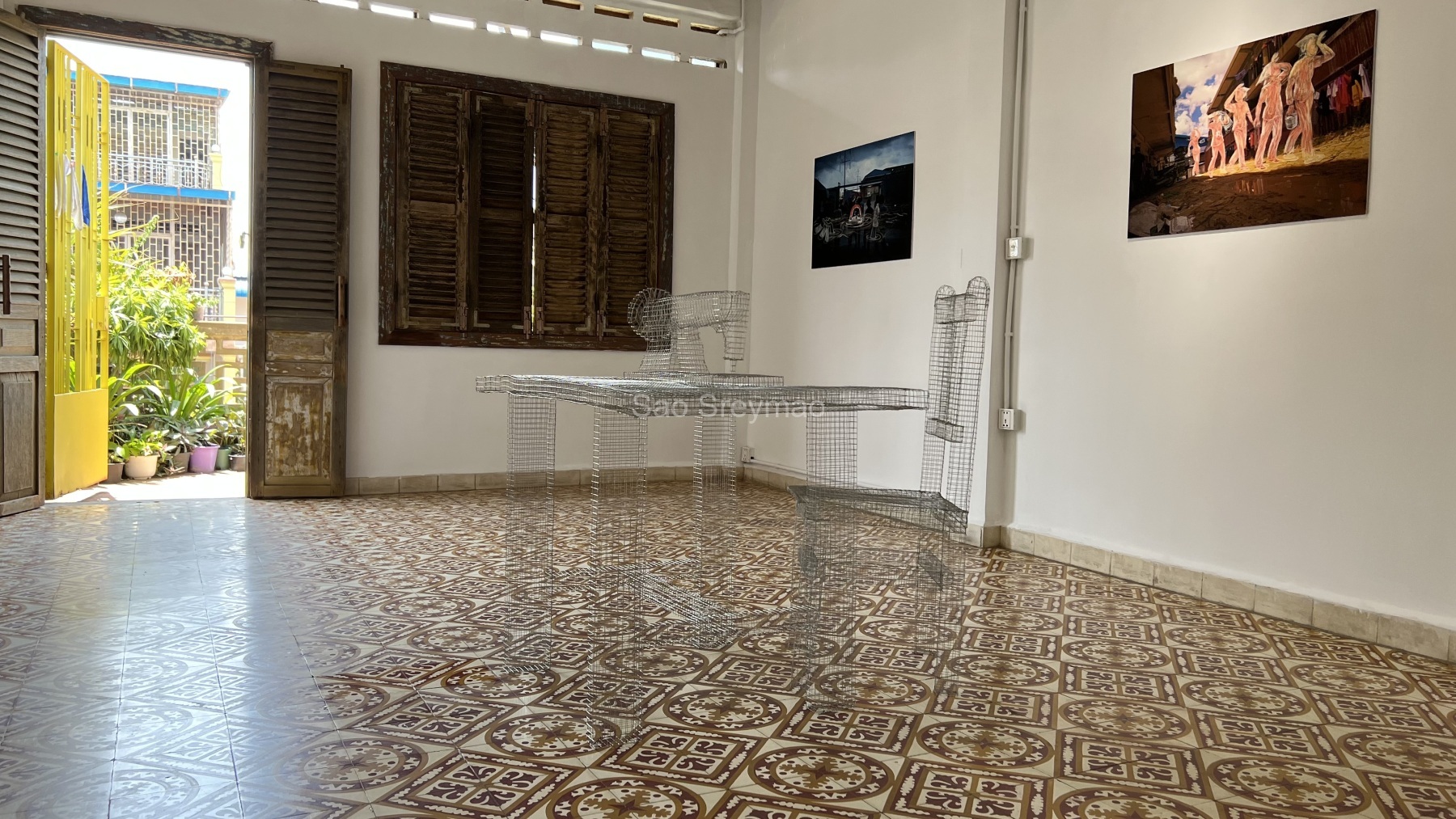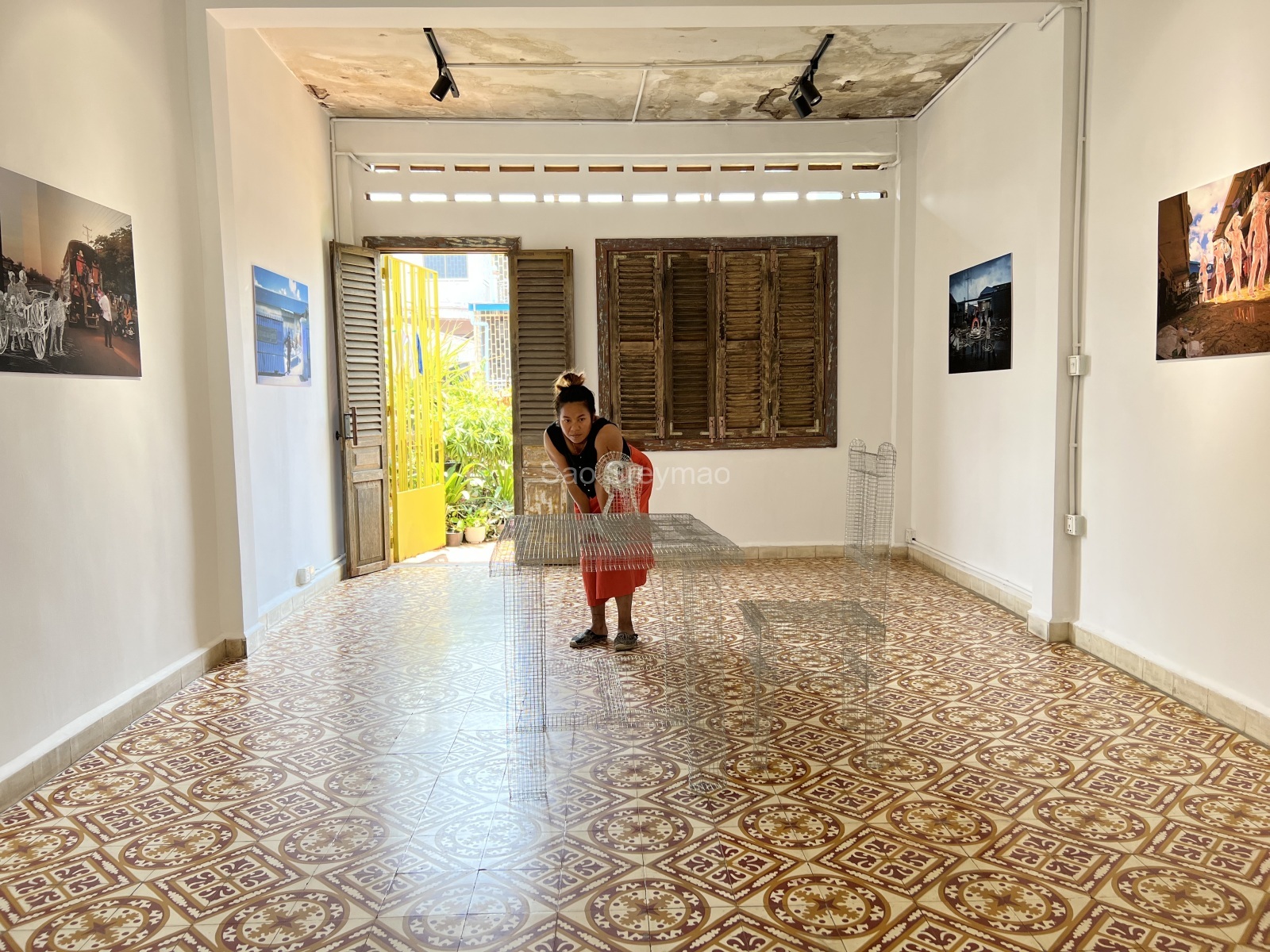សរសៃដង្ហើម | BREATHING THREADS
Curated by Vuth Lyno

Pursuing her long-standing interest in displacement and human-made social and environmental challenges, Sao Sreymao presents her recent work that illustrates some vivid aspects of the work and life of Cambodian garment workers. This exhibitions howstwelve digital sketches on photographs and one wire mesh sculpture depicting the women workers’ journey and experience.
When Sreymao was 17, she faced a decision of whether to move to Phnom Penh and work in a garment factory along with her cousins and relatives. However,SreymaoinsteaddecidedtomovetoworkinSiemReapand continue pursuing her artistic practice after her art studies at Battambang’s Phare Ponleu Selpak. This decision impacted her life greatly. As part of this project, Sreymao revisited some of her relatives working in garment factories and/or doing business around the factories.
Using her signature digital sketch technique on saturated photographs, Sreymao chiefly conflates the past, present, and future on a singular plane. The most often white threads of 2-dimensional sketches porously overlaying the realistic photographs create somewhat reality-fiction images that combine memory and the imaginary. We are invited to interpret the relationship between these different types of images like a collage.
For example, in one work, the drawing depicts several women standing, apparently holding on to a railing bar at presumably the back of a transporting vehicle. These women envelop a photograph of some children. Together, they appear standing strikingly in the middle of a freshly plowed rice paddy. Here the prospect of promising children and the anticipation of a cultivated land ready for planting rice are placed in parallel. The ghostly presence of these women reflects the reality of the typical absence of adults in Cambodian rural areas due to their labour migration locally or regionally.
The Cambodian garment, textile, and footwear industry represents the
largest share of the local manufacturing sector, accounting for about 80% of the country’s export.BetweenJanuary-November 2022alone,Cambodia exported $10.092 billion worth of garments, footwear, and textile-related products , according to the General Department of Customs and Excise.1 With about 1,100 factories, the industry employs over 750,000 workers, primarily female.2 These women, hence, are the backbone of the Cambodian economy.
In many of Sreymao’s prints, we can sense the hardship, perseverance, and yet vulnerability of the women garment workers at work and outside of work, as well as during the critical challenge of the Covid-19 pandemic. While they are the vital drivers of the country’s economy, they are at the bottom of the global garment supply chain and most often easily affected by the global economy of garment imports from the West, local labour practices, and
climate change. A recent study draws the relationship between the garment industry and climate change and its impact on Cambodian garment workers.3
The perseverance and fragility of the garment industry and the workers cannot be more lucidly yet poetically expressed in Sreymao’s sculpture. Sitting in the middle of the exhibition space is a life-size sewing machine and a chair made of wire mesh. The fine line of the material makes it barely visible. It sleeps still, but it also breathes through its porosity. Its spectral presence only makes us imagine when the sewing machine is in motion. It also invites questions about its existence and longevity.
Breathing Threads presents the people behind the rising Cambodian economy and the tasks and challenges they face. Sreymao draws images of these determined women, line by line, one thread at a time, allowing us to witness the remarkable experience they endure. Through illustrative and poetic use of digital drawings, photographic images, and “3-dimensional sketch” sculpture, Sreymao brings us to the worlds they breathe.
1 https://www.phnompenhpost.com/business/tax-break-textile-linked-industries-stay-till-2025 2 https://research.hktdc.com/en/article/MTE4NDY2NDA4OQ
3 https://pure.royalholloway.ac.uk/ws/portalfiles/portal/45045019/Hot_Trends_Report.pdf
